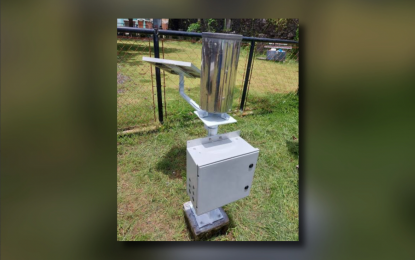
DISASTER RESILIENT. An automated rain gauge system. The Department of Science and Technology has called on local government units to adopt technologies to boost disaster risk reduction and management response. (Pagasa image)
TACLOBAN CITY – The Department of Science and Technology (DOST) has called on local government units in Eastern Visayas to adopt technological innovations related to disaster risk reduction and management (DRRM) to boost the region’s disaster resilience.
DOST Eastern Visayas Regional Director Ernesto Granada said they have been writing letters to mayors informing them of locally developed technologies related to DRRM.
“We have been requesting local governments to share the technologies and innovations that they intend to adopt for their DRRM-related programs, projects, and activities. We are still waiting for feedback from the majority of local governments,” Granada added.
These technologies developed by local scientists were showcased during the “Handa Pilipinas” Visayas leg from Nov. 8–10, 2023, at the Summit Hotel here.
Among the technologies showcased are agrometeorological stations, flood early warning systems, flood sense, bamboo shelters, bamboo octagonal jointing systems, brown rice bars, complementary food products, enhanced nutrition, food processing equipment, vacuum fryers, automatic trash rakes, water hyacinth harvesters, collapsible toilet bowls, emergency food reserves, ready-to-eat chicken eggs, upgraded emergency disinfection systems, rainwater collection systems, and satellite rainfall extremes.
Other technologies are an increase-reality terrain-flood simulator, a community dengue early warning system, damage assessment software, disaster resources mapping, a learning laboratory, a self-contained, disinfecting cubicle, oil spill recovery technologies, seismic activity monitoring systems, earthquake simulators, life-saving devices, soil monitoring after severe flooding, and radiation monitoring stations.
These technologies are available solutions that can be adopted and implemented in their respective agencies for effective DRRM activities. (PNA)
